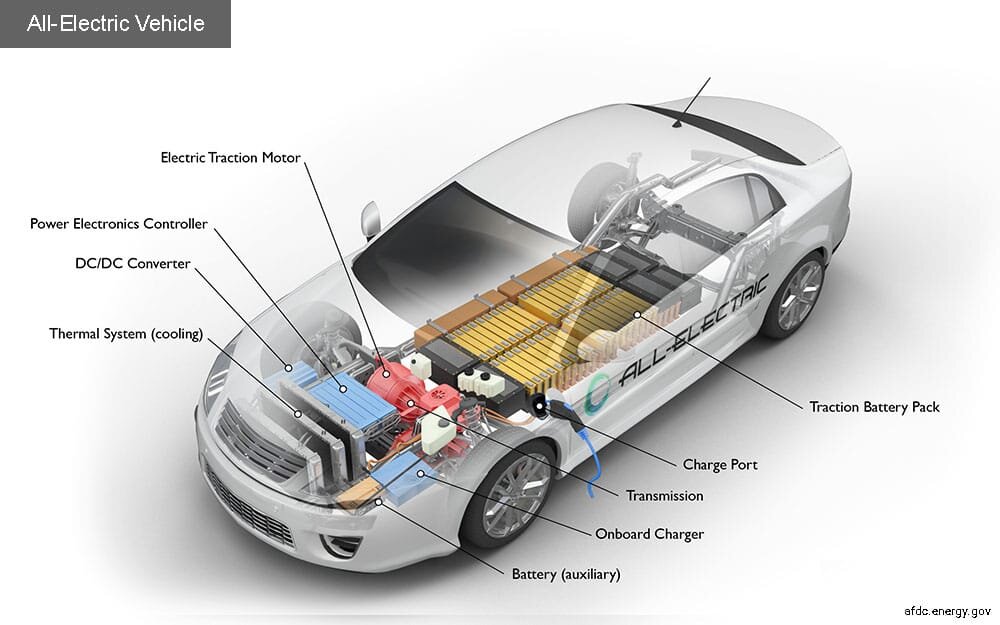Live Classes

The Government is pushing hard for transition to Green Economy. One vital aspect of this transition is transition to Green Mobility. Enhancing the share of Electric Vehicles in transportation is necessary to ensure green mobility. The finding of Lithium deposits in J&K and possibility of developing domestic battery manufacturing ecosystem in India has led to new excitement about EVs. However, the adoption of EVs still faces several hurdles. Addressing these challenges is necessary to ensure greening and decarbonisation of the transportation sector.
What is the new government policy for EVs?
The Indian government’s new policy aims to establish India as a hub for electric vehicle (EV) manufacturing, targeting global companies like Tesla and BYD.
Key provisions include reducing import duties for EVs imported as Completely Built Units (CBUs) to 15% from the previous range of 70%-100%, provided these EVs have a minimum CIF value of $35,000. This reduced rate lasts for five years.
To qualify, manufacturers must invest at least $800 million and set up a local production facility within three years, allowing them to import up to 40,000 EVs over five years, capped at 8,000 annually.
The policy mandates localization targets, requiring 25% localization within three years and 50% by the fifth year to integrate production with domestic market needs.
How does this affect Indian manufacturers?
Indian manufacturers like Tata Motors have expressed concerns that reducing import duties for foreign EVs could negatively impact the local industry.
The policy is seen as particularly advantageous for global Original Equipment Manufacturers (OEMs), focused on the luxury segment of the market, a segment where Indian companies currently have limited presence.
Most Indian players are strong in the market segments below ?29 lakh, which may not directly benefit from the reduced import duties aimed at higher-end models.
This differentiation in market focus might lead to increased competition for Indian manufacturers in the premium vehicle segment.
What challenges do global players face in the Indian market?
Adaptation to Local Conditions: Global players need to adapt their vehicles to India’s specific environmental conditions, road infrastructure, and usage patterns, as mentioned by I.V. Rao from The Energy and Resources Institute.
Lack of Charging Infrastructure: The Indian market has a significant challenge due to inadequate charging stations. The Confederation of Indian Industry noted that India might need at least 13 lakh charging points by 2030 to support a substantial uptake of EVs.
Consumer Preferences and Product Availability: There is limited penetration (only 2.2%) in the affordable range for passenger vehicles due to a lack of locally adapted and priced products.
What are the challenges to adoption of EVs for people?
Lack of Infrastructure: At present, charging stations comprising of both slow and fast charging capabilities are available for all kinds of vehicles in the market. However, the number of the charging stations is inadequate. This implies their availability is restricted and even the ones that are deployed do not function optimally. Hence, the lack of charging infrastructure is a major hindrance to the adoption of EVs at scale.
Performance: The EV manufacturers have been unable to implement the practicality of EVs being ‘value for money’ for consumers. The original equipment manufacturer (OEMs) are not developing EVSE (Electric Vehicle Supply Equipment). As a result, the companies that are into EVSE are unsure about the types of EVs , charging technology and its time of launch. This uncertainty does not allow the EVSE OEMs to do long term planning.
Range Anxiety: It refers to an EV owner’s fear that the vehicle’s battery does not have sufficient charge for it to reach the destination. It is linked to how far the EV can travel on a single battery charge and the availability of charging points. This is a consequence of limited infrastructure and duration of battery charge.
Long time for Charging Batteries: The battery charging time is much longer than the time taken for refuelling the ICE vehicles. Fast charging can result in overheating of batteries, hence it is avoided. This reduces the acceptability of EVs.
Financial Constraints: The initial cost of owning an electric car is currently higher than that of ICE vehicles mainly due to the cost of the battery. Manufacturers anticipate cost parity by 2025 – if not sooner.They are collaborating with the electric car battery production supply chain to lower costs and improve overall efficiency. Apart from this, limited credit options and high EMI make it tough for the EV Sector to operate.
Battery Technology: One of the most significant barriers to EV adoption is the battery manufacturing process and supply chain. To enable EVs, new mining and supply networks are required. The lithium-ion battery is the most common and frequently utilised EV energy source. India has no manufacturing capacity for Lithium-ion cells and relies completely on imports of EV batteries. This also increases costs.
Download pdf to Read More